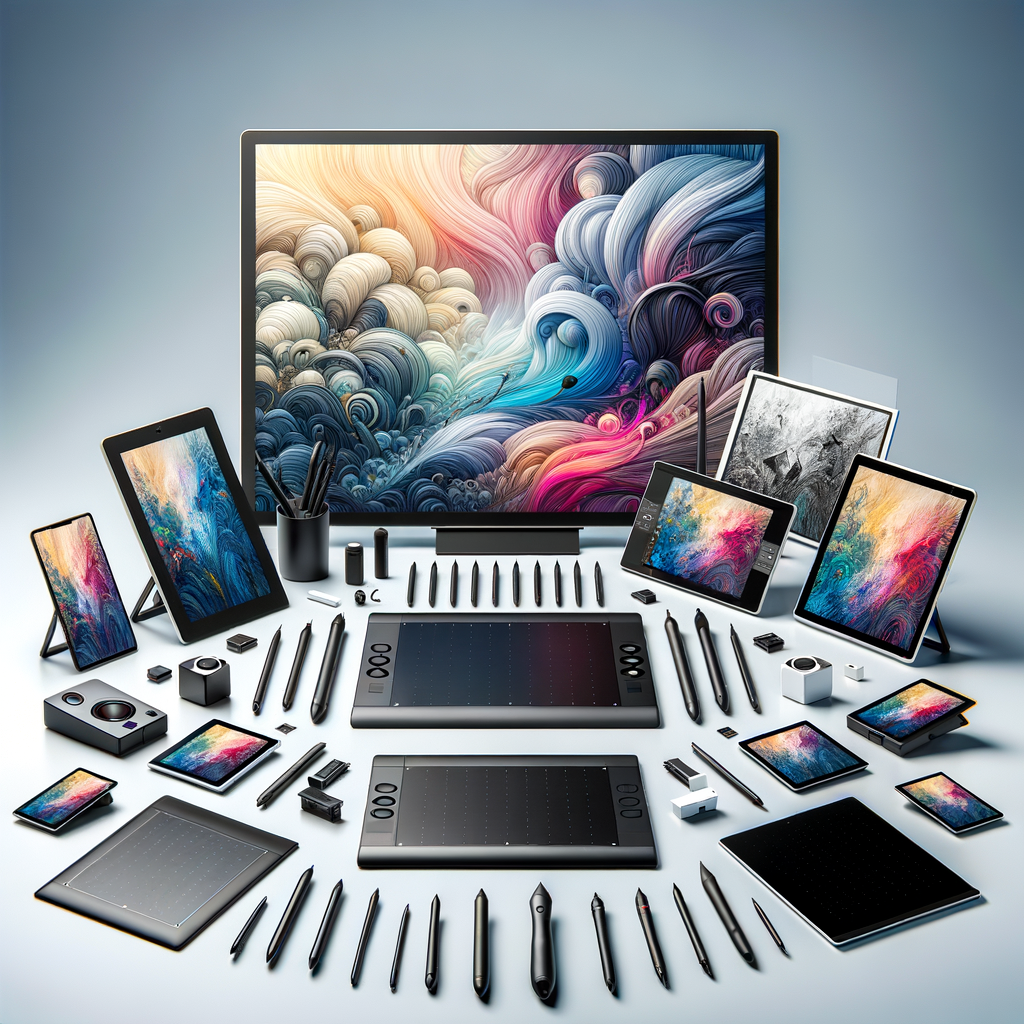
As the realm of digital art continues to expand, choosing the right graphics tablet becomes crucial for artists at any skill level. Whether you are a novice artist or a seasoned professional, finding the ideal tool can greatly influence your workflow and artistic expression. This article serves as your ultimate guide to understanding what to consider when choosing a graphics tablet, its features, and how to select the perfect one for your needs, regardless of your experience level.
When discussing tools for digital art, graphics tablets have become almost synonymous with the medium. Their ability to mimic the feel of traditional drawing while harnessing the power of digital technology creates a unique experience that many artists crave. However, with a plethora of options available, newcomers might feel overwhelmed. This guide aims to shed light on the key factors to consider when selecting a graphics tablet.
1. Understanding Graphics Tablets
A graphics tablet, also known as a drawing tablet or digital tablet, is an input device that allows artists to draw directly onto a digital surface. It consists of a flat surface that detects movements of a stylus or pen. This tool translates your physical movements into digital strokes on your computer, enabling a seamless art-making experience.
2. Types of Graphics Tablets
Before making a purchase, it's crucial to understand the different types of graphics tablets available:
- Non-Display Tablets: These tablets do not have a built-in screen. Instead, artists draw on the tablet while looking at their computer monitor. This type is often more affordable and is great for beginners.
- Display Tablets: These have a screen where you can see your artwork as you draw directly on it. Display tablets offer a more intuitive experience, making them ideal for professionals and serious hobbyists.
- Hybrid Tablets: These devices can function both as a traditional tablet and a display tablet. They are often more versatile and are suitable for varying usage scenarios.
3. Key Features to Consider
When choosing the perfect graphics tablet, keep the following features in mind:
- Size: The size of the tablet matters, especially if you have limited desk space or if you plan to travel with it frequently. Larger tablets can offer more space for detailed work, but they can be cumbersome to transport.
- Pressure Sensitivity: The sensitivity levels dictate how well the tablet recognizes your strokes. Tablets with higher pressure sensitivity can detect variations in pressure applied while drawing, offering a more nuanced range of lines.
- Resolution: The resolution of the tablet determines how accurately it can detect movements. A higher resolution typically results in a smoother drawing experience.
- Pen Quality: Consider the stylus quality; some tablets may come with a battery-powered pen while others use a passive stylus. Battery-free pens often provide a more convenient and less interruptive experience.
4. Target Audience: Beginners vs. Professionals
While many features are important across experience levels, beginners may prioritize affordability and ease of use, while professionals might seek advanced features that can enhance their artistic abilities. If you are just starting, a non-display tablet with satisfactory pressure sensitivity could be a good starting point. On the other hand, seasoned artists may benefit from investing in a high-end display tablet to adequately accommodate complex workflows.
5. Brand Recommendations
Various brands offer great options for graphics tablets:
- Wacom: Renowned for their quality and reliability, Wacom tablets range from entry-level options to high-end professional devices.
- Huion: Known for producing affordable and versatile graphics tablets, Huion has gained popularity among budget-conscious artists.
- XP-Pen: XP-Pen offers a good range of options that cater to both beginners and professionals, often at competitive prices.
- Apple iPad: While not a traditional graphics tablet, the iPad, especially when paired with the Apple Pencil, is a highly favored option for digital artists, allowing for portability and direct drawing.
6. Exploring Accessories
In addition to the graphics tablet itself, consider other accessories that can enhance your experience:
- Tablet Stand: A stand can provide better ergonomics while drawing, preventing strain during long sessions.
- Screen Protector: Using a screen protector can prevent scratches and provide a textured feel for those who prefer more resistance while drawing.
- Stylus Nibs: Having extra stylus nibs can be beneficial as they tend to wear out over time or break.
7. Trying Before You Buy
Whenever possible, testing different tablets before making your final decision can significantly influence your satisfaction with the product. Many stores offer display models that you can try out. Additionally, attending art trade shows can provide opportunities to try out multiple devices and speak with other artists for recommendations.
Conclusion
The journey of selecting the perfect graphics tablet requires consideration of personal preferences and specific artistic needs. It’s vital to think about aspects such as style of drawing, budget, and whether portability is essential for you. By using this guide, may you find the ideal tool that enhances your digital art experience and inspires your creativity.
As you embark on your artistic journey, remember that the best tablet is ultimately one that feels comfortable for you and complements your workflow. Happy drawing!

